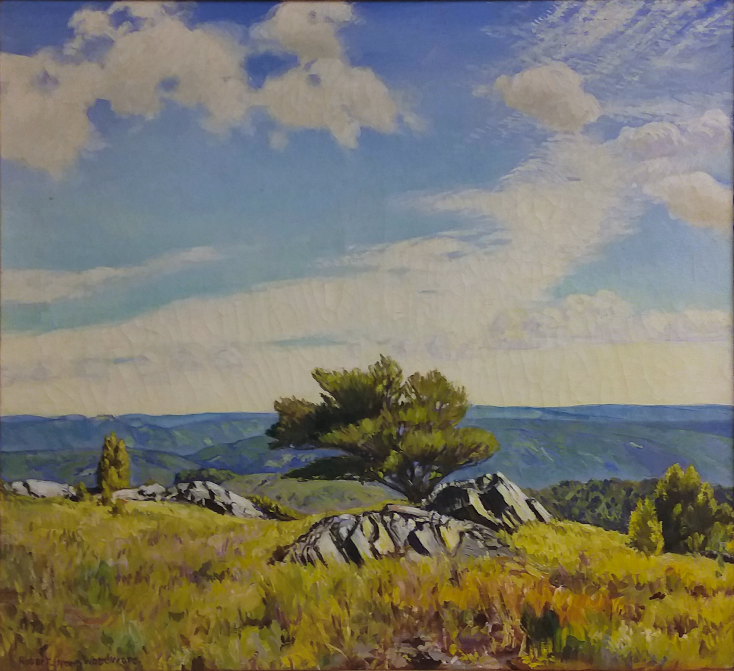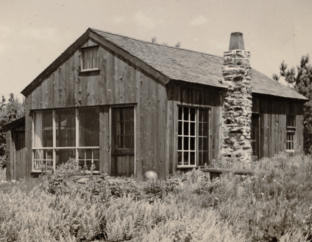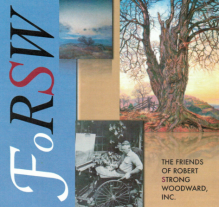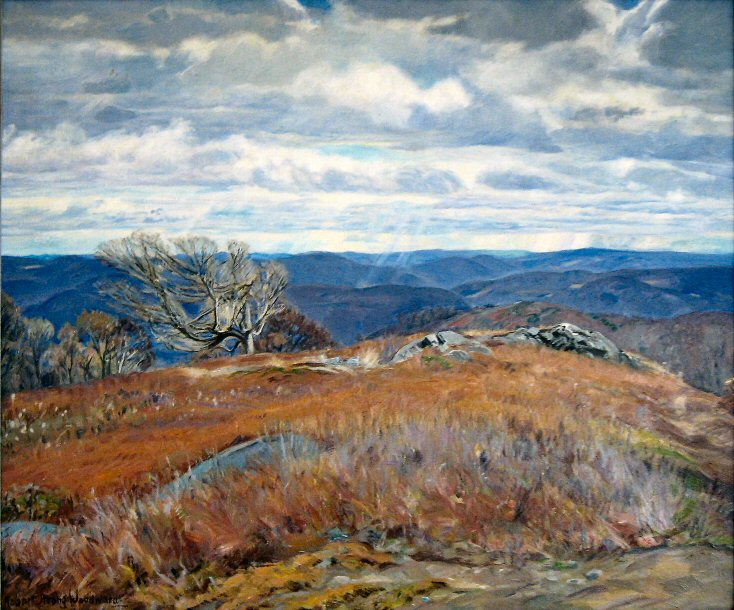Quick Reference
Painted in 1940.
Burnt Hill pasture
Heath, MA
Oil on Canvas
Landscape
Trees, Pastures
25" x 30"
Westfield (MA) Athenaeum, 1941
Unknown
Unknown
Featured Artwork: November Light
RSW's Diary Comments
"Painted about 1940. From my Heath front window of the pasture when the fern beds, in late November, were rich henna red, one ledge over right of the canvas, the wind blown maple (not the beech) in the middle center, against the band of dark blue hills, of course. A heavy dark gray November sky not a bright canvas but one somber and rich in reds and grays."
Additional Notes

 Woodward's signature brand in the lower left of canvas
Woodward's signature brand in the lower left of canvas
It is interesting to us that Woodward used the term "henna red" to describe the coloring of the pasture. Henna is better known today because it has become popular with the young set to use in the tradition South Asian tradition of body art, especially in wedding ceremonies. ⮟

 IMG: Traditional South Asian Henna...
IMG: Traditional South Asian Henna...
Pure henna is red: When used alone
(without other additives), natural henna
yields red to red-orange tones, according
to Henna Color Lab [ Google Search's AI]
⮝ What RSW is referring to is the color, which is typically a brownish-red or auburn
color and in some cases a red-dish orange. Here is a description given by Google's AI:
⮜ "...color, often described as a reddish-brown or auburn here's why:
Lawsone pigment-- Henna leaves contain a natural pigment called lawsone, which is
responsible for producing an orange-red dye when the leaves are crushed and mixed with a liquid
to form a paste.
Color variation-- Depending on the source region of the henna, the quality of the product,
and your original hair color (if using for hair), the exact shade can range from red-orange to
auburn to deep red or burgundy.
Therefore, "henna red" or "henna color" generally refers to a reddish shade, though the exact
hue can vary."
★ The Heath pasture, high on a hill, is called by
locals in Woodward's time, "Burnt Hill" which is very likely due to the "henna-red" colors the
pasture adopts in the autumn and really stands out in November, the artist favorite month.
⮝ One last point we want to make about this and the other November painting made in 1940,
November Holiday. Woodward claims that to be the "first" made from the pasture house
studio. What he means is after its was finished. RSW bought the property in 1938, and the
pasture house took two years to complete. We are guessing this painting was the second canvas made.
❤ This painting is privately owned and we are so grateful for them to share their painting with us.



.png)

